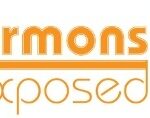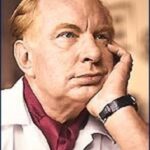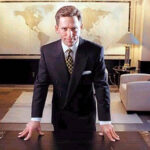Now that Tom Cruise has been identified as the second most powerful person in the Scientology hierarchy by questionable biographer Andrew Morton, perhaps we should turn our attention to discovering a bit more about the early origins of this movement. It only took a few hundred years to produce the first Mormon Presidential candidate and the Mormons don’t have nearly the influence held by Scientologists. Scientology has been defined specifically as a religion by some, and merely as a spiritual movement by others. The founder of Scientology was Lafayette Ronald Hubbard, better known as L. Ron Hubbard. Hubbard was best known as a writer of fiction before he turned his attention full time to examining the failures of modern society.
In 1950 L. Ron Hubbard published his groundbreaking book Dianetics, which managed to land on many best-seller lists. Dianetics was the title that Hubbard lent to his philosophy of life, the universe and everything. This philosophy postulates that all the myriad difficulties experienced by the human race are engendered by mental defects that he labels “engrams.” The only way to absolve and correct these deficiencies is through a highly structured process akin to counseling that he termed “auditing.” The fundamental principle of Dianetics involves a duality between analytic part of the brain and the part of the brain that reacts to sensory input. Hubbard’s vision of the reactive mind is one dedicated to data collection when the analytic mind is not at work. This data collected by the reactive mind is placed in a subconscious file that cannot be retrieved by the analytic part, but that nonetheless is the engine driving one’s destructive behavior. (Pretty Freudian for a religion that consistently attacks modern psychological practices.) The purpose of Dianetics is to reach a state of clarity by cleansing the effects brought about through this data stored in the reactive mind.
Gradually, Hubbard’s ideas caught on and when even a number of those in the medical community appeared to endorse his ideas, the membership began to swell. Hubbard set to the task of creating an organization framework to support and expand his philosophical ideas. Hubbard began conducting audits that explored the fascinating areas existing inside the reactive mind of his patients. It was during this period that Hubbard first began to formulate his ideas about life experiences prior to birth and the possibilities for reincarnation. This idea represented a new direction for Hubbard and opened many new possibilities for Dianetics. Nevertheless, the movement for many smacked of religion rather than science and many of those who’d hopped on board the Dianetics gravy train rejected his new vision entirely, especially those on the medical end of the spectrum. Hubbard persisted, however, and would not be deterred. By the early 50s he was already calling his school of thought Scientology. By 1954 the very first Church of Scientology was founded in, appropriately, Los Angeles. Within a few years, Scientology churches could be found from Ireland to New Zealand.




